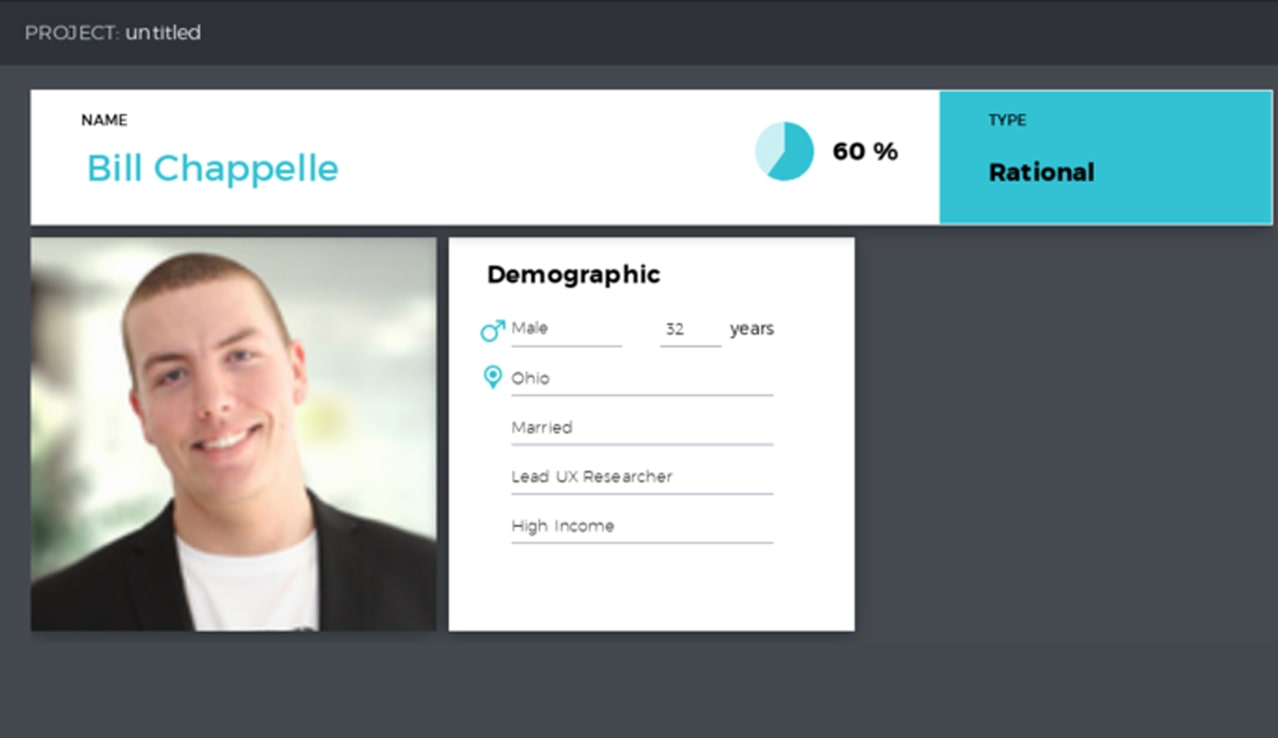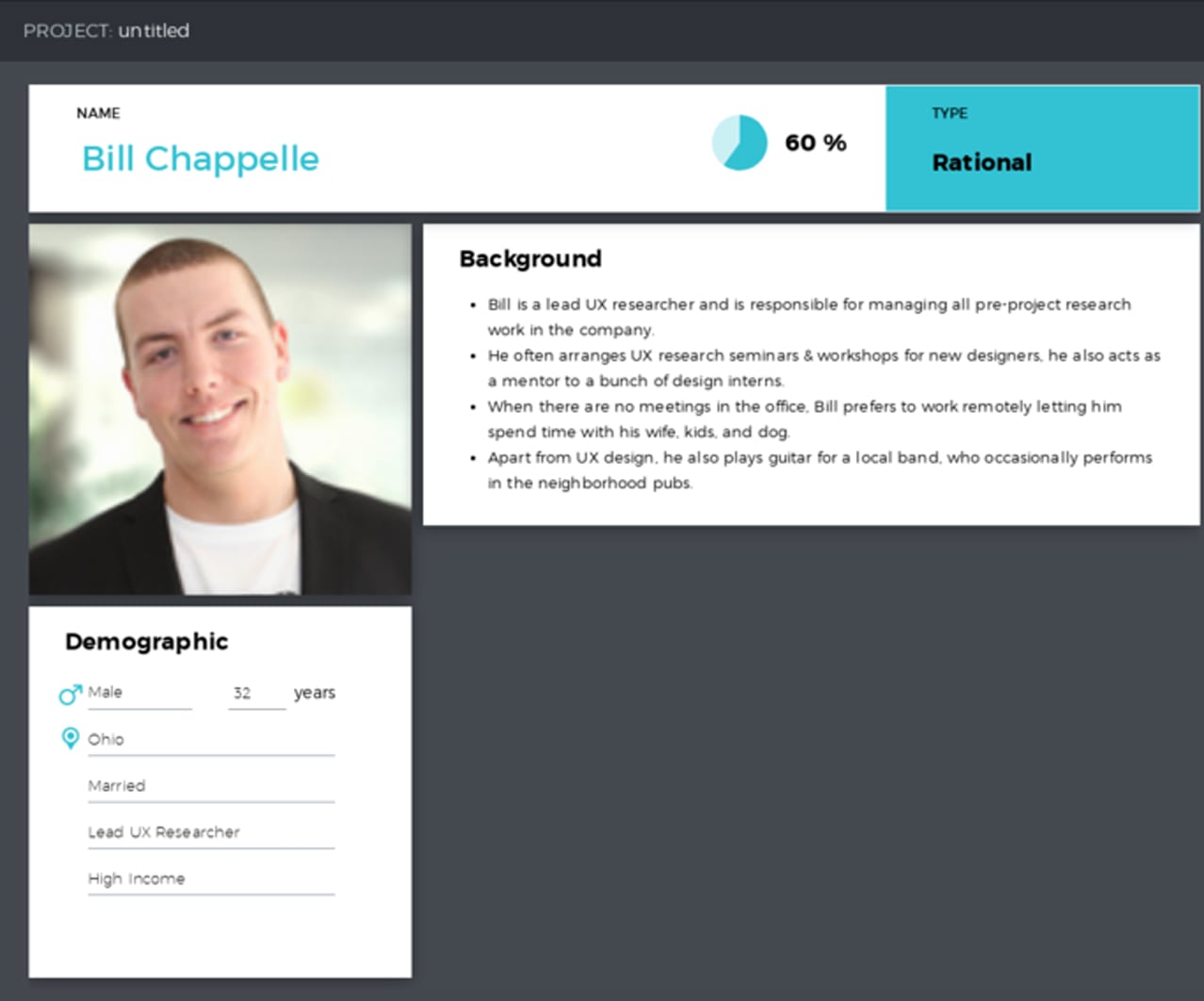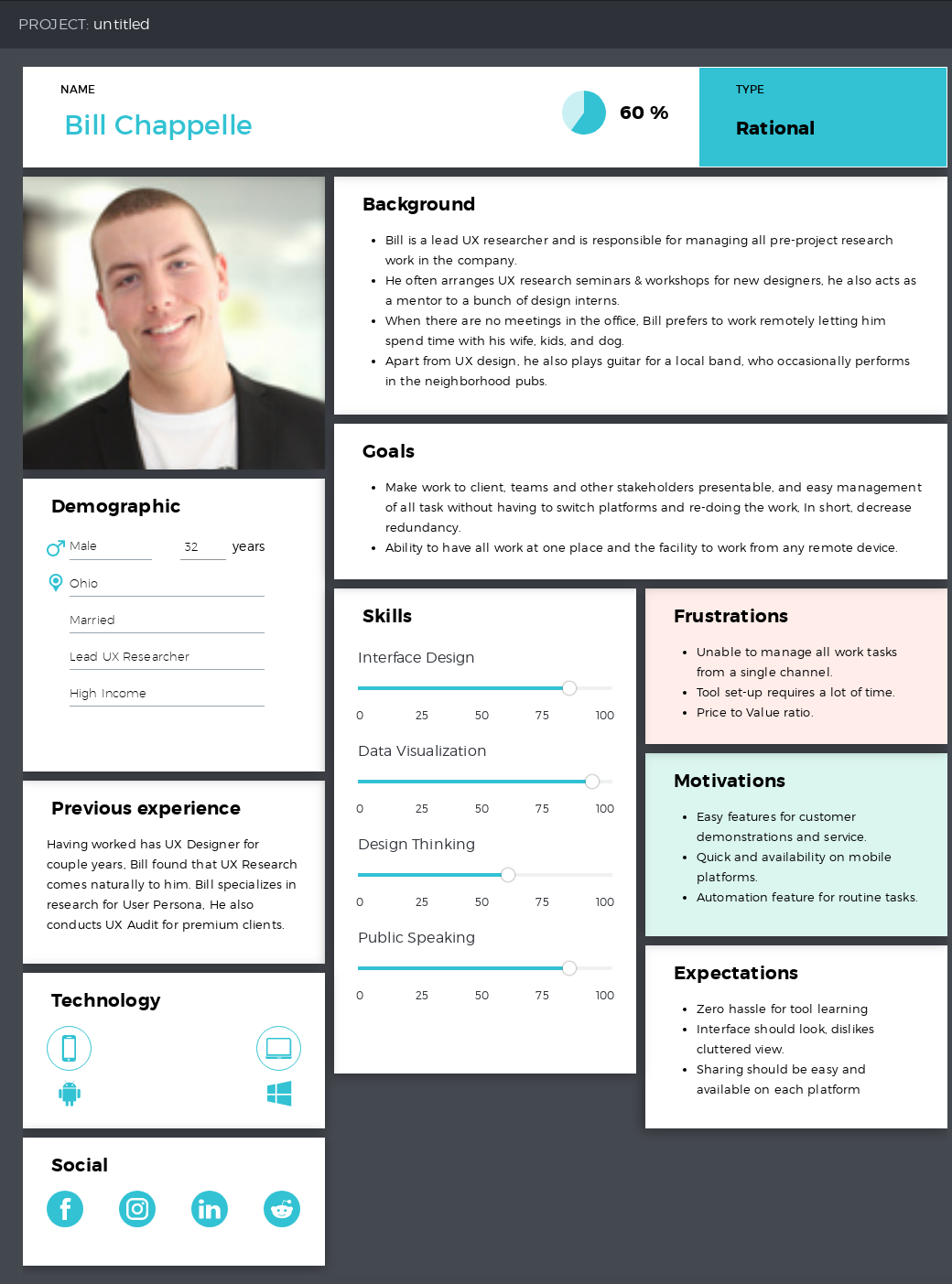How to create user personas: A step-by-step guide
Dec 30, 2022

Users Personas are regarded to be the backbone of user research, they form the core for any product’s development. The mainstream use of user persona become prevalent in the ’90s, it was created to gain robust insights about the habits, demographics, and preferences of the target audience of a certain product. It is continuously used by marketers and designers across industries.
In this article, we’ll explore the underlying pivotal role of user persona in creating a successful user experience. Along with that, we’ll go through a sequence of steps on how to create a thriving user persona.
What Is a User Persona?
It’s the representation of your product’s ideal user base. It acts as a benchmark for the design, marketing, and development teams to work towards creating an optimal user experience.
User personas contain a fictional name and photo, or in some cases, if the research is accumulated from direct interviews with the target audience, real names and photos are used with consent. It is followed by a short bio and descriptions regarding their age, gender, preferences, hobbies, likes, and dislikes. Detailed personas sometimes include information on the behavioral and psychological patterns of the users. These descriptive factors are based on real pieces of information collected from interviews, surveys, polls, etc.
How Is User Persona Useful?
User personas help businesses transform the representation of “the user” or “the consumer” into an actual person with thoughts, opinions, and sentiments. This persona, in turn, depicts an assemblage of users who share similar features and who all have more or less the same goals and pains. In order to pin down what exactly these goals and pains are, you need to have a full picture of who the person is.
User personas, as a matter of fact, are an effective way of establishing a solid foundation for your product because it helps you define your ideal user early on during the process of design. As a practice, building a user persona is something that as a designer for the company or client, you should consider doing before you even start designing the product.
Now. step-by-step, we’ll be discussing and adding new sections, leading to our final end goal- Creating an Informative & Insightful User Persona.
1. Research & Data Gathering
Conducting research and collecting information are the basics of any product development. Especially in case of creating user personas, this stage is must otherwise what would you fill or type in these sections and subsections of your user persona?
There are multiple ways to go about collecting information, we’ve listed done some basic and efficient methods for starters:
- Start with whatever you’ve on your target audience. Either from some research, you did previously, or some facts that you just know because you were part of the team from the beginning.
- Make constructive assumptions, this will help balance the outcome as most of the data collected will be research-based and rational, including assumptions to some extent by the law of averages could help the outcome to be as realistic as possible.
- Use web analytics and other tracking tools. This is hidden gold, analytical tools like Google Analytics and Firebase help businesses track the activity of users on their app or website. This method gives the most realistic data.
- Talk to existing users, collect feedback and conduct user interviews, talking directly to users could help companies understand the vulnerabilities of their product. Also, use data from surveys and polls.
2. Segment Your Audience
It is vital to understand that one persona is not enough to represent your entire target audience, and nor can you have half a dozen a persona because you know, the reason is obvious, you cannot design a product that is ideal for everyone. Then the question is- How many?
All cases are different, so might be yours, to help find a number, we suggest to find answers to these questions
- According to the audience data at disposal, for how many user personas do you think you can design and justify it?
- Chances are a lot of personas that might have overlapping characteristics or sub-grouped into a larger group pool, or maybe the group is too small to be considered. In such cases, what personas should I drop and which to be considered?
- Out of the finalized user personas, which to be kept primary and which to be considered secondary? Answer to this provides you the group which is most vital to your product.
- How to design with the secondary personas in mind? Make sure the final list has the minimum number of personas.
3. Setting Demographic Information
Once you’re done with the research and segmentation phase of a user persona, you can finally move on to the fun part of creating it. It is fairly sensible to start with the basics- demographics.

Using authentic demographic information is essential to developing an empathetical persona. Use real names and images, you can find multiple free name and face generators online so that avoid yourself from this hassle.
Inside this section, include the basic information like name, age, profession, marital status, income, residence.
4. Describe Background Information
In this section, the thumb rule is- The more, the better. Based on the demographics information, write down everything you could think of about your persona.
Every tiny bit of granular detail is a deep insight, but at the same time refrain from unnecessary and over the top details to avoid the clutter of data.

5. Describe Persona Goals
This is an extremely important step in creating user personas because it is vital that the users’ end goal of using the product aligns with the company’s goal. The ultimate goal must be to meet the needs of users.

Users should never suffer during his/her stages of product usage and such information can help companies design a much more efficient product.
6. Motivation & Pain Points Experienced By The Persona
Finding what motivates a user to use your app or website is important, so is to include the frustration experienced by the concerned user representing the persona.

It might be difficult to identify the points, as the data collected would’ve different opinionated points, but it the team’s responsibility to find similar patterns and group them into a parental representation of reasons that can be included in the section
7. Top it With Additional Information
In this step, you could add some extra information such as hobbies, skills, previous work experiences, and educational backgrounds.
You can add further more information like the social media handles, this helps designers dive deep into the persona by understanding what platforms the user prefers, in turn giving them the idea of users’ design UX preference

Now that you’ve created a user persona, it is extremely vital to re-analyze your creation, because as humans we’re prone to using irrational thinking to make quicker decisions. There are multiple cognitive biases that can affect your work, we’ve taken an example of one such bias to make you understand the significance of eliminating such subconscious action.
The whole purpose of creating User Personas is to design products without assumptions and pseudo analysis. One of the common and hard to battle cognitive bias is the Confirmation Bias. Also known as the Super Villain of biases.
As humans, we’re weirdly attracted to data that confirms our beliefs or hypotheses and tends to neglect any opposing information. The human brain is not traditionally programmed to rationalize situations which makes it difficult to get rid of.

Source: TVTropes
One of the simplest examples is the very first link that you click on after your Google search. You click on the link which endorses your viewpoint on that particular search text.
To tackle such situations, it is better to use opinions of multiple people, and by the law of averages, you’re most likely to make a rational decision.
To Wrap Up
At this point, you have got a very basic initial draft of the user persona ready. Of course, this could be improved a lot by adding and removing information, and through other steps of re-iteration. Moreover, you could add more insightful details like influences, life skills, and other social information.
User Personas are fun to create, especially alongside your colleagues, and the benefits of it are seamless and never-ending.
Tags
Chintan Bhatt
Founder and Design Director

